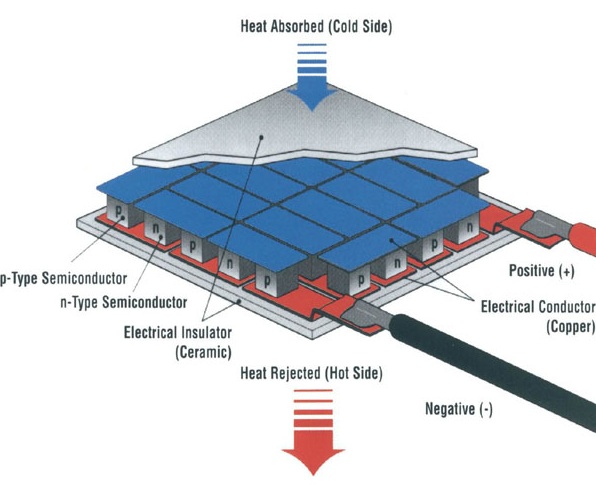Sunday, 28/12/2025 | 18:27 GMT+7
Waste heat accounts for a painful 60% of the gasoline consumed by our cars, and in other Industrial applications the numbers are equally devastating.
In chemical and refining Industry fluid flows are typically exchanged against each other to use the heat energy more efficiently (Example: Product with 200°C that has to be cooled down, against coolant with 60°C, that has to be heated up ). Those two (if their flows and heat coefficients are similar) would typically end up with temperatures (Product out: 150; Coolant Out:110°C) but to run efficiently high temperature differences (Engineering: Δt, speak “Delta-tee”) are required.
At low Δt compared to ambient temperature, or if we lack another flow with a compatible characteristics, there is just no other way than blowing it into the air, or cooling the flow down with cooling water- this Energy is lost. Especially with increasing Energy prices every kW lost does not only bother the pride of the Engineers, but it also has a dramatic effect on a factories bottom line. A regular industrial pipe with DN50 (diameter app. 50mm, similar to a normal sewage water pipe) with water running at a regular 3m/s (app. 10km/h or an advanced jogging speed) and with 40°C Δt of temperature loss, would add up to a loss of thermal energy of around 1000 kWh, per hour!

A new Technology promises to convert temperature differences of flows like those above mentioned to Electricity and therefore it would be able to recover a part of this Energy, even at a low Δt. Why is this a potential revolution? Because on a global level there are thousands of those small pipes in the Industry, draining energy 24/ 7 and those could be used to generate electricity. This energy then would not have to be produced with conventional power plants any more. The potential impact is enormous!
This new Technology is called Reclaimed ThermoVoltaic and the devices “Thermoelectric Generators” (TEG) work off the Seebeck principle to convert the flow of heat (from hot to cold) into electrical power with the use of thermoelectric semiconductors. A semiconductor is a material that is usually less electrically conductive than a metal and more electrically conductive than an insulator, such as glass. Semiconductors are also used to create devices such as transistors, LEDs, and solar panel photovoltaics (PV), and their electrical conductivity can be adjusted.
First studies and pilot installations look very promising. But only time will tell whether installation costs are covered by the Energy saved, so that plants make sense both in an environmental as well as in a economic way, and whether this Technology will disrupt the industrial landscape.
Anh Tuan








 Webinar 2: “Financial Support for Energy Efficiency Enterprises – Opportunities and Challenges”
Webinar 2: “Financial Support for Energy Efficiency Enterprises – Opportunities and Challenges”
 Vietnamese enterprises achieve green growth and cut costs through energy efficiency
Vietnamese enterprises achieve green growth and cut costs through energy efficiency
 Capacity Building for Program Implementing Entity
Capacity Building for Program Implementing Entity
 Enhance Energy Efficiency Knowledge for Managers of Cement Industrial Enterprises
Enhance Energy Efficiency Knowledge for Managers of Cement Industrial Enterprises
 Capacity building for participating financial institutions of the VSUEE Project
Capacity building for participating financial institutions of the VSUEE Project
 Capacity building for participating financial institutions in Ho Chi Minh City
Capacity building for participating financial institutions in Ho Chi Minh City
 Strengthening capacity for energy management officers of local government agencies
Strengthening capacity for energy management officers of local government agencies